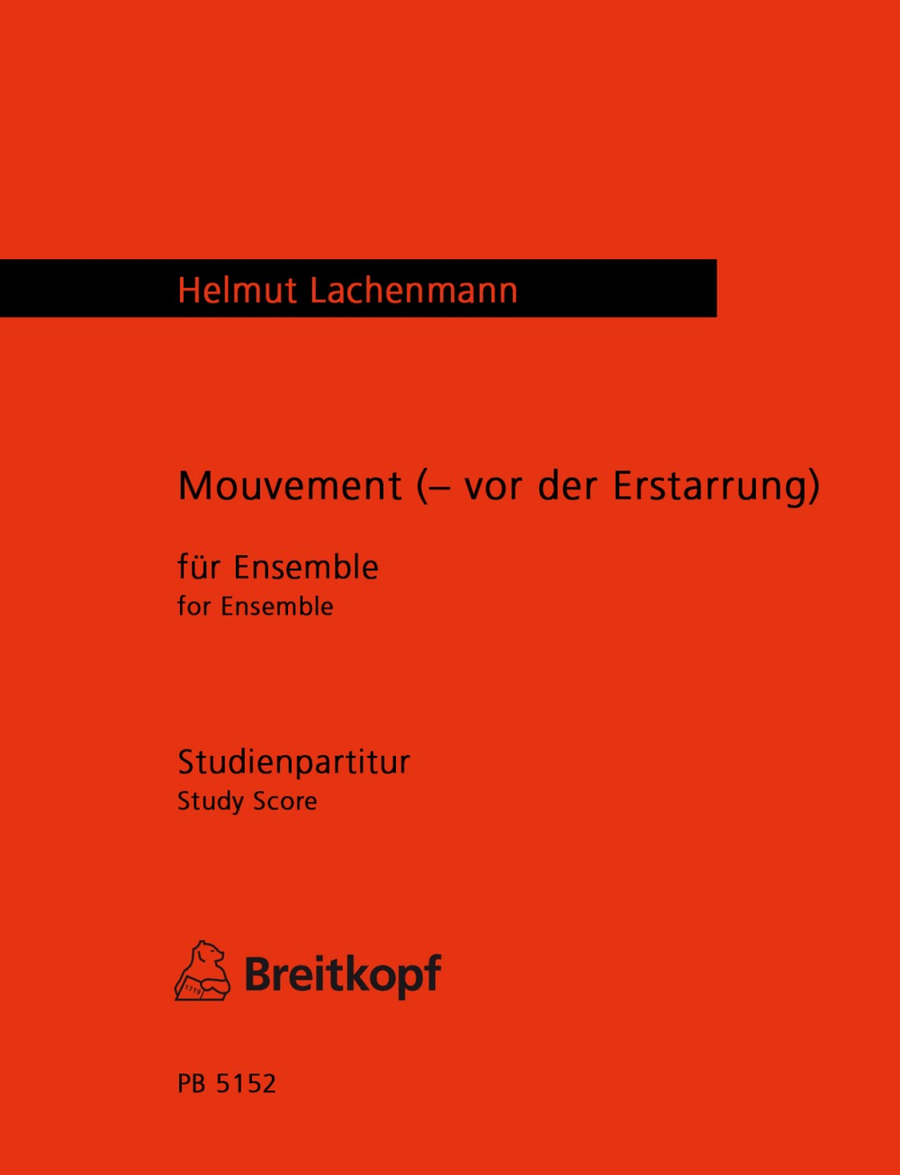Details
SKU: BR.PB-5152-07
Study score. Composed by Helmut Lachenmann. Softbound. Partitur-Bibliothek (Score Library).World premiere: Paris, November 12, 1984
Music post-1945; New music (post-2000). Study Score. Composed 1983/84. 100 pages. Duration 24'. Breitkopf and Haertel #PB 5152-07. Published by Breitkopf and Haertel (BR.PB-5152-07).ISBN 9790004208946. 9 x 12 inches.
Created 1982-84 as a commissioned work for the Ensemble InterContemporain Paris, it is a music of dead movements, practically the last convulsions and its pseudo-activity: rubble out of empty - dotted triplet, motored - rhythms which already show that inner paralysis which precedes the outer paralysis. (The fantasy which, in the face of deeply felt threats, gives up all expressive utopia and, as beetle does, lies struggling on its back, continuing to work with empty learned mechanisms, recognizing at the same time their anatomy and uselessness and by doing so, seeking and trying new beginnings.) The staged phases of the work, from arco-machine" to the "fluttered organ point", "trembling fields" and "stop-and-go throbbing frenzy" all the way to the "dear Augustin" and other situation-variations resulting therefrom: they orient themselves thoroughly to the outer mechanical proceedings attached thereto and deliberately use the empty material quality of these conjured means as counterpoint to its usual expression which has now become meaningless. This music embodies a life of setting up and breaking down. Such breaking down is not staged or, even worse, celebrated as a natural event in process, but rather is very often suggested through structural fracture of the sound (e. g. by "melodic" modification of the distortion factor in the case of percussive figures, by steering the muting technique etc.). As a result, it was, by alienation, possible to remain in the area of a similar language and to compose with "untouched" sounds, and, in spite of the temptation, not to flee into the exotic alienation: Only by the inclusion once again of non-alienated sound must it be proven that the importance lies not just in fracturing the sound, but rather in the attempt to break down and discover anew the perception practice in ourselves.(Helmut Lachenmann, 1984)CDs/LP: Klangforum Wien, cond. Hans Zender, Schola Heidelberg, ensemble aisthesis, cond. Walter Nussbaum CD KAIROS 0012202KAI Ensemble Modern, cond. Peter Eotvos CD ECM New Series 1789 461949-2 Klangforum Wien, cond. Hans Zender CD KAIROS 0011012KAIEnsemble Modern, cond. Peter Eotvos LP HM 713 DBibliography:Cavallotti, Pietro: Praformation des Materials und kreative Freiheit. Die Funktion des Strukturnetzes am Beispiel von ,,Mouvement (- vor der Erstarrung)", in: Nachgedachte Musik. Studien zum Werk von Helmut Lachenmann, hrsg. von Jorn Peter Hiekel und Siegfried Mauser, Saarbrucken: Pfau 2005, pp. 145-170.Febel, Reinhard: ,,... Das Bist Du". Zur Musik von Helmut Lachenmann, in: Reinhard Febel, Alles standig in Bewegung. Texte zur Musik 1976-2003, hrsg. von Rainer Nonnenmann (= Quellentexte zur Musik des 20./21. Jahrhunderts 11.1), Saarbrucken: Pfau 2004, pp. 168-180.Hockings, Elke: All Dressed Up and Nowhere to Go, in: Helmut Lachenmann - Music with matches, hrsg. von Dan Albertson, Contemporary Music Review 24 (2005), Vol. 1, pp. 89-100.Luck, Hartmut: Philosophie und Literatur im Werk von Helmut Lachenmann, in: Der Atem des Wanderers. Der Komponist Helmut Lachenmann, hrsg. von Hans-Klaus Jungheinrich, Mainz: Schott 2006, pp. 41-55.Shaked, Yuval, ""Wie ein Kafer, auf dem Rucken zappelnd"". Zu ""Mouvement (- vor der Erstarrung)"" von Helmut Lachenmann, in: MusikTexte 8 (1985), pp. 9-16.
World premiere: Paris, November 12, 1984".


